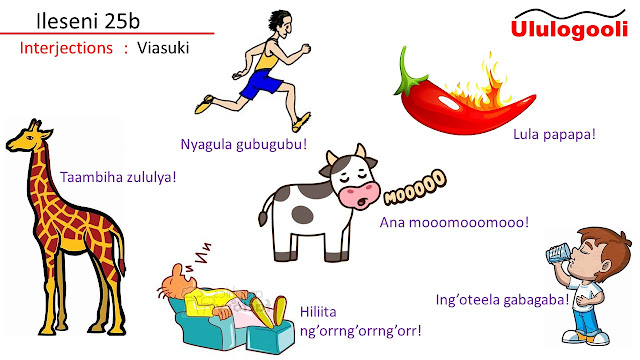Featured
- Get link
- X
- Other Apps
Lesson 25 : Viasuki via (Interjections of) Lulogooli
There are sounds in Lulogooli whose expression can be described as “mioyo” (vocables). A vocable expresses a sound. It can be onomatopoeic sound or animal jeer.
A mosquito flies “ndiiiiiiii!” while a dog barks “wuwuwu!”. A delicious meal is eaten “ntswantswantswa!” while a walk in mud is “potopotopoto!” and more.
The nature of the sounds is by taking the highest pitches, “asuka” or the cry “lila”. That is why they can be called “viasuki” or “vilila”.
The sounds are not definite; a cow might bellow “mboomboomboo!” or “mooomooomooo!”. Others happen once like the “chap!” for a cut or “begedya!” for breaking.
Even then, the "actual sounding" may be lost in lettters. For instance running is "gu! bu!, gu! bu!" written as "gubugubu". Similar to snoring, "ng'orr...! ng'orr...! ng'orr...!" written "ng'orrng'orrng'orr."
Usage of interjections in Lulogooli is not only for surprise. Sometimes it is to help to inquire more. A vocables as “malya!” can be both used to enquire and also show surprise. Sometimes a question mark would be inserted, “ngani?!”
Exercise
- Read aloud the interjections as in chart 25a
- Add five onomatopoeic sounds from your own experience.
- Get link
- X
- Other Apps


Comments
Post a Comment